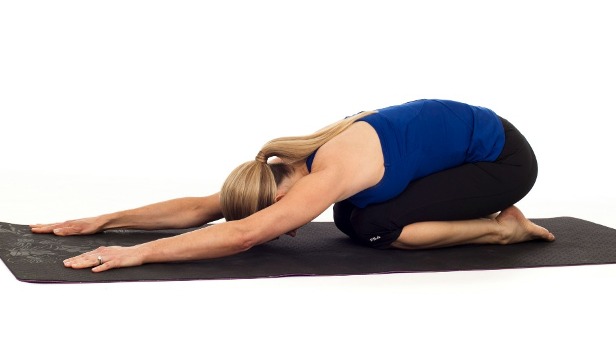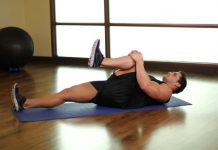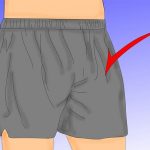A strengthened back can withstand more stress and also protect the spine better, than the back that has not been strengthened through exercise. Proper conditioning through flexible and strengthening back exercises will help your back avoid common injuries. Regular exercise also reduces the severity of any injury, if the spine is traumatized. It also helps relieve the pain related to several lower back pain problems. There are various types of stretches for lower back pain that can help strengthen the spinal column. These exercises also aid in supporting muscles like ligaments, and tendons. The main working region of these back exercises is not only for the lower back but also the abdominal muscles, buttocks and hip muscles.
Some Great Benefits of Stretching Exercises:
- Offer a healthy life
- Increase muscles flexibility
- Stress Relief
- Improve blood circulation
- Maintain a good posture
- Warm up your muscles
Best Stretches For Lower Back Pain:
Contents
1.) Bottom to Heels Stretches for Lower Back Pain
Performing the bottom to heels stretches is an effective way to get rid of the lower back pain. You should do this regularly to treat and avoid back pain related problems naturally.
- Bend on all fours, with your knees under hips and hands under shoulders.
- Don’t overarches your lower back portion. Maintain your neck long and straight, your shoulders back and keep your elbows unlock.
- Gently take your bottom backward, keeping the natural curve in the spine.
- Hold the stretch for at least one deep breath and go back to the starting position.
- Repeat the process, at least, ten times to get rid of lower back pain naturally.
- If you have knee problem then avoid sitting back on your heel.
Use a mirror to ensure you are in the correct position. Don’t perform this stretching exercise forcefully. You should always maintain a comfortable position to avoid any problem. It is one of the best stretches for lower back pain.
2.) Hips and Gluteus Stretch For Lower Back Pain
The buttocks and hips support the lower back of the body. By stretching these muscles help you in maintaining spine flexible.
Hip Stretch
- Stand with feet shoulder-width apart, now take a half-step back using the right foot and then bend the left knee and transfer weight back to the right hip.
- Bend forward and reach down to the right leg, while keeping the right leg straight. You have to keep stretching until the outer hip is felt.
Piriformis Muscle Stretch
- Performing piriformis muscle can contribute to back pain or leg pain.
- You have to lie straight on your back, cross the both legs over each other and now gently pull the legs towards your chest.
- Keep pulling the crossed leg until you felt a stretch in the buttock area.
3.) Hamstring Stretches for Lower Back Pain
The hamstrings stretch for lower back pain is quite effective as it runs through the back of each thigh. Any type of tightness in this muscle restricts the motion in the pelvis, which as a result increases the stress across the low back and destroys the correct posture. Hamstring exercises gradually lengthen them and decreases the stress felt in the lower back.
Standing Hamstring Stretch
- This is one of the simplest stretches for lower back pain. Stand straight and bend the waist forward, while hanging your hands down and keeping the legs straight.
- Try to touch your feet but make sure that you don’t feel too much strain while doing this.
- You have to stop when you feel the stretch in the lower back.
Chair Hamstring Stretch
- Using the chair to touch the toes could give you less strain in the lower back.
- Sit on a chair and place your legs on the other chair.
- Try to reach the toes keeping only one leg stretched at a time.
Towel Hamstring Stretch
- This stretch is very easily and comfortable to perform.
- Lie down on the ground, wrap a towel around one leg and straighten the foot by holding the towel.
- Wall Hamstring Stretch
- Lie on the ground putting the buttock against the wall.
- Place your one leg on the wall and try to push the knee straight.
- Only one leg is stretched at a time.
4.) Mckenzie Exercises
It was found that extending the spine by exercise could reduce the pain generated from a compromised disc space. This stretching exercise was named after the therapist Mackenzie. These exercises may also help decrease the herniation of the disc itself and also reduce pressure on a nerve root. There are several Mackenzie exercises, some performed while standing straight and other by lying down. Mackenzie exercise is also helpful in treating leg pain. For some patients back pain is more tolerable than leg pain. If a patient is able to find the root of the pain, he may be able to continue without any surgery and avoid a surgical discectomy.
5.) Bound Ankle Pose for Lower Back Pain
Now, it is the time to introduced yoga to help you for lower back pain. Bound ankle poses need to bind your ankles to perform. This stretch exercise will help you to unwind your hips.
- Sit straight and bring your soles of feet together. Pull your heels as close as possible to your groin.
- If you feel that your knees are too high to relax, put a blanket on the seat bones to aid the hips up.
- You can also try to take the feet out more from the pelvic cavity to form a diamond-like a shape with legs.
- You should keep the spine straight and pull your shoulders back and move toward your feet. This pose will open and unwind the inner thighs and groin.
6.) Knee Rolls for Lower Back Pain
- This is one of the simplest stretches for lower back pain.
- You just have to lie on your back on the floor and put a pillow under your head.
- Keep your knees bent and together while lying down straight.
- Now, roll the knees one side followed by the pelvis, while keeping the shoulder on the floor.
- Hold that position for one deep breath and bring the knees back to initial position.
- Repeat the same process on another side. Repeat at least ten times to get rid of the lower back pain.
- While performing this exercise, don’t put an extra effort just feel comfortable.
7.) Back Extensions for Lower Back Pain
- To perform back extension you have to lie on your stomach, while prop on your elbows, extending your spine and keeping your shoulder back and neck long.
- Keep your neck long and push the ground down by hands to make an arch. You will feel a mild stretch in the stomach as arch your back. Maintain the position and deep breath for 10 seconds.
- Repeat the steps, at least, ten times every day to get rid of lower back pain fast and naturally.
8.) Deep Abdominal Strengthening for Lower Back Pain
- Lie on the floor on your back. Place a pillow under you head.
- Keep your feet straight and bend your knees and keep hip width apart.
- Breathe out by drawing up the muscles of the pelvis and lower abdominals. Actually, you were performing an imaginary zip along the stomach.
- Hold this mild stretching while breathing your abdomen for ten breaths and then relax.
- Repeat the process six times daily.
9.) Pelvic Tilts
Pelvic tilt is yet another great stretch for lower pack pain treatment.
- Lie on the floor on your back. Place a pillow under you head.
- Keep your feet straight and bend your knees and keep hip width apart.
- Gradually flatten the lower back into the floor and contract the stomach.
- Now, turn the pelvis towards the heels, until you experience a gentle arch in the lower back.
- When you fell back muscles contracting, return to initial position.
10.) Dynamic Lumbar Stabilization Exercises
This technique, first identifies the patient “neutral” spine, i.e the position that allows the person to fall most comfortable. After that, back muscles trained to teach spine to stay at this position. It is one of the most beneficial stretches for lower back pain. Lumbar stabilization exercises may also be done along with McKenzie exercises. The McKenzie exercises help you to reduce back pain, and the lumbar stabilization workout help strengthens the lower back. The stabilization exercises can be rigorous, that’s why it may not may not be well tolerated by all patients. These exercises are not recommended for elderly patients or patients with significant pain. They should go for less strenuous means of physical therapy.

















